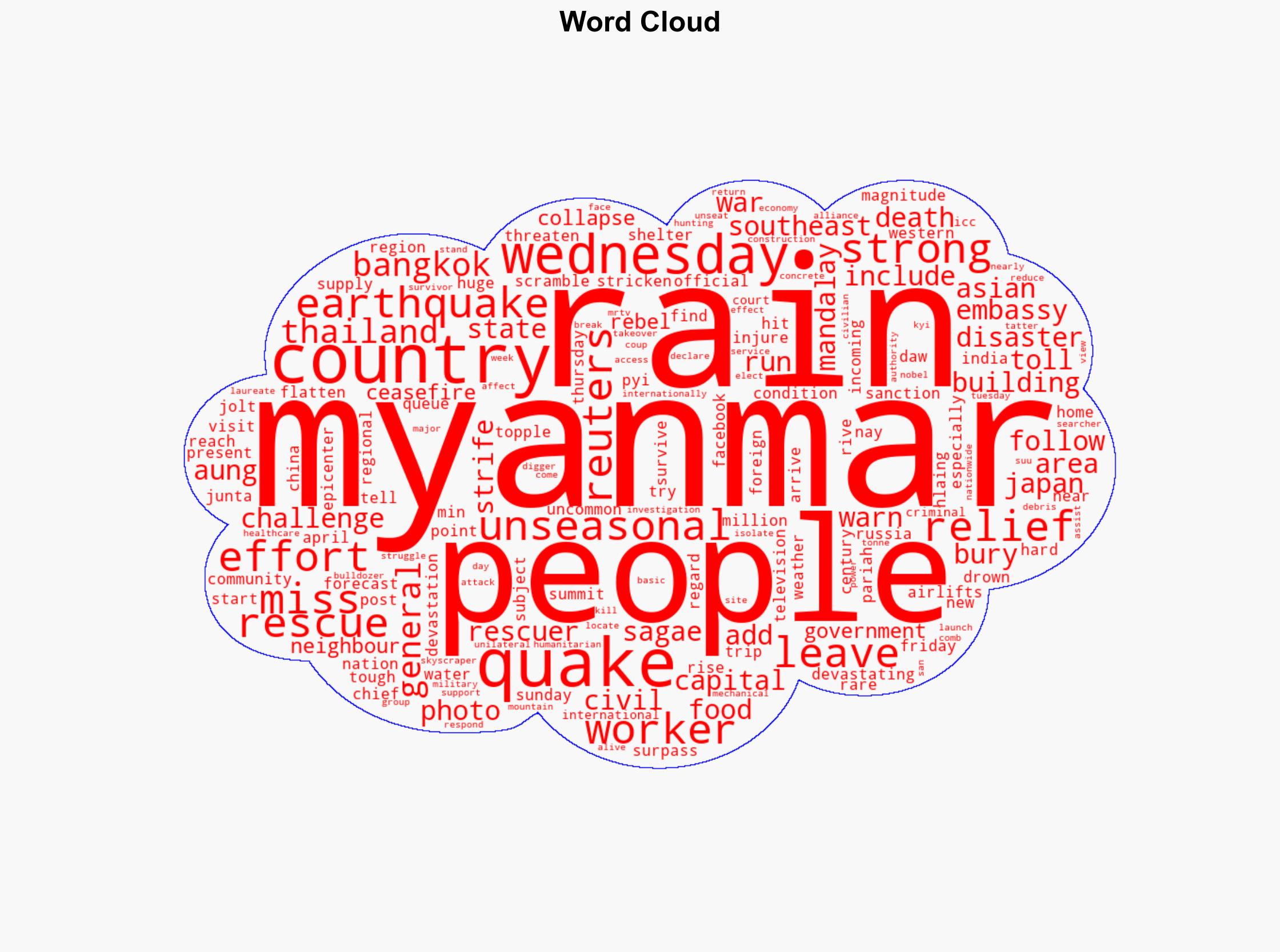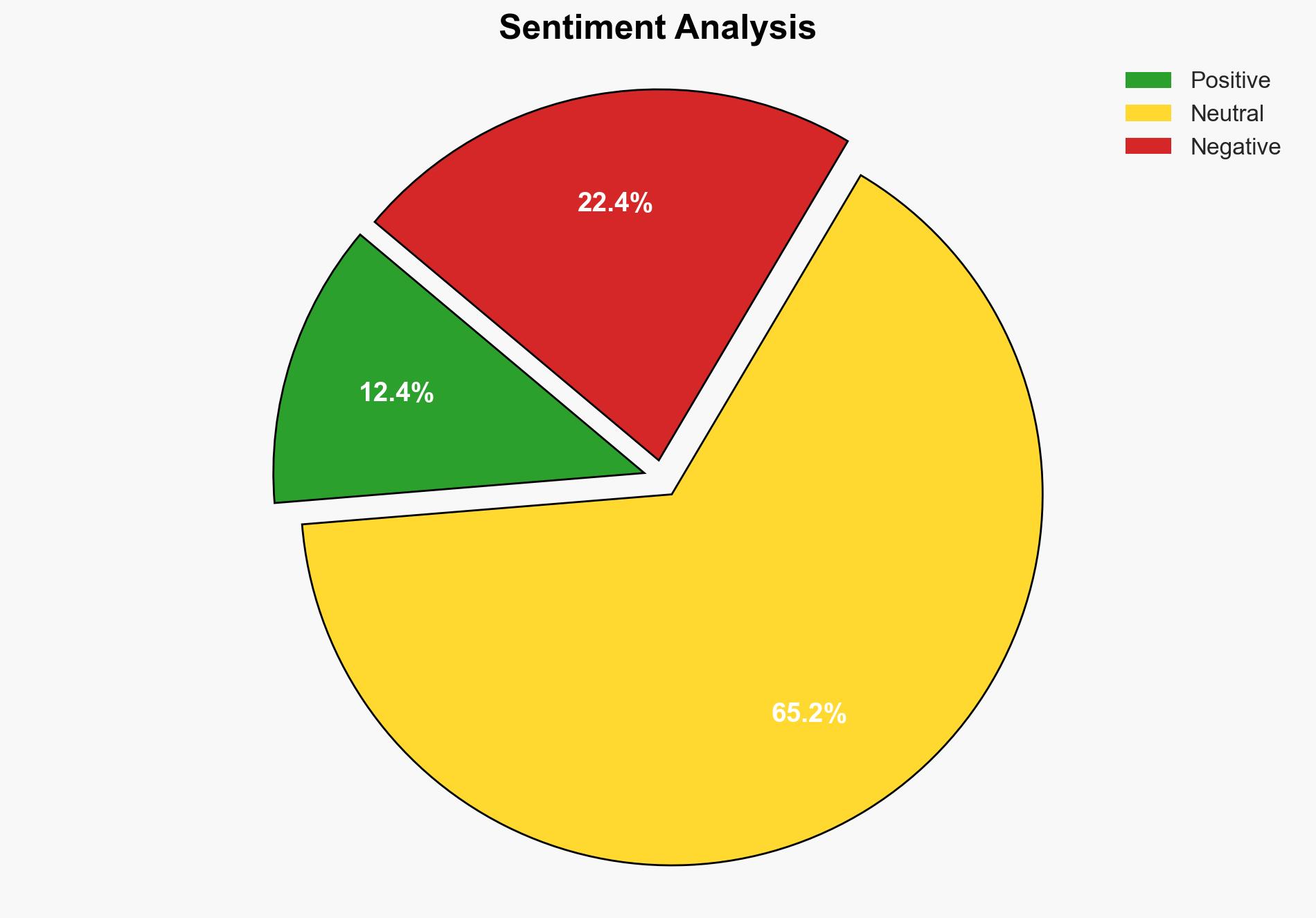Myanmar earthquake toll crosses 3000 – Bangkok Post
Published on: 2025-04-03
Intelligence Report: Myanmar Earthquake Toll Crosses 3000 – Bangkok Post
1. BLUF (Bottom Line Up Front)
The death toll from a devastating earthquake in Myanmar has surpassed 3,000, with ongoing challenges due to unseasonal rain complicating rescue efforts. The earthquake, one of the strongest in the region in a century, has caused significant destruction, impacting millions and exacerbating the country’s existing civil strife. Immediate international assistance and strategic coordination are required to address the humanitarian crisis and stabilize the region.
2. Detailed Analysis
The following structured analytic techniques have been applied for this analysis:
General Analysis
The earthquake struck Myanmar with a magnitude that has not been experienced in the region for over a century, leading to widespread destruction. Buildings have collapsed, communities have been flattened, and essential services such as food, water, and shelter are in dire need. The ongoing civil war in Myanmar further complicates rescue operations, as access to affected areas is restricted. The unseasonal rain forecasted to hit the region poses additional risks to both survivors and rescue workers.
3. Implications and Strategic Risks
The earthquake has significant implications for regional stability and national security. The humanitarian crisis could lead to increased displacement and exacerbate tensions within the country. The economic impact is severe, with basic services and infrastructure in tatters. The international community’s response, including aid from neighboring countries, is crucial to mitigate further deterioration. The situation also presents a risk of increased insurgent activity, as rebel groups may exploit the chaos.
4. Recommendations and Outlook
Recommendations:
- Enhance international coordination for relief efforts, ensuring rapid deployment of resources to affected areas.
- Implement temporary ceasefires to allow unhindered humanitarian access and aid distribution.
- Strengthen infrastructure resilience and disaster preparedness in the region to mitigate future risks.
Outlook:
Best-case scenario: Effective international cooperation leads to a swift humanitarian response, stabilizing the region and reducing further casualties.
Worst-case scenario: Continued civil unrest and inadequate aid response exacerbate the crisis, leading to increased fatalities and regional instability.
Most likely outcome: Gradual improvement in relief efforts with ongoing challenges due to weather conditions and political instability.
5. Key Individuals and Entities
The report mentions significant individuals and organizations, including Min Aung Hlaing and Aung San Suu Kyi, as well as international entities involved in the relief efforts. The cooperation of neighboring countries such as China, India, and Russia is critical in addressing the crisis.





